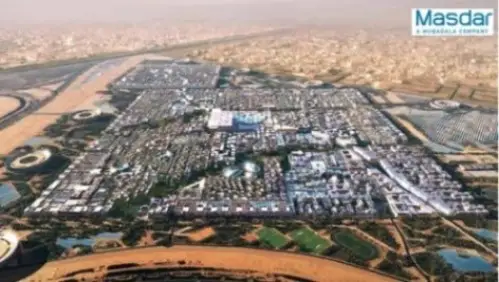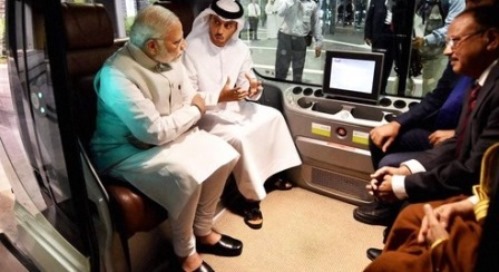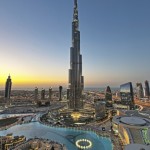Abu Dhabi, the capital of the United Arab Emirates (UAE), has among the largest carbon footprints in the world, but the governemnt s keen to change that equation. The city’s environmental efforts includes building a nearby city using cutting-edge technology that will be entirely carbon neutral and will produce no waste.

Where is ‘Masdar’?
Masdar City is a planned city project, located in Abu Dhabi, in the United Arab Emirates.
Masdar is the arabic word that mans ‘Source’.
Why it claims to be a Zero Carbon City?
For its functioning, Masdar City will rely solely on solar energy and other renewable energy sources, thus claiming to become the first zero-carbon, zero-waste city in the world.
“The quality of air will be better than any other street in the Gulf and in the world, and that alone will bring you safety, health and happiness”, says Kaled Awad, director of the Masdar project.
Will Use Renewable energy
The project intends to use the desert’s greatest threat – the sun – into their greatest asset and will be primarily used to power the city.
Keeping cool without Air Conditioners
Instead of air conditioners, the planners will rely on architeture so that most of the shades is provided by walls / fences around the city.
Unlike Dubai or Abu Dhabi, Masdar is compact like ancient Arab cities. Streets are narrow so buildings shade each other, and the walls and roofs of buildings will do their bit to shed heat too. The vertical faces are dressed with screens which look like a terracotta mesh. They keep the sun out but let the breeze in.
To encourage a breeze, wind towers are being built, drawing draughts through the streets without using energy.
The planners are also evaluating other solutions to keep the heat out.
Masdar will still use electricity for things like desalinate=ing sea water but, when it comes to power, the city intends to rely on its design.
Driver-less Cars
The city is compact & foot-friendly, planners have designed the city to be covered on foot. But if fatigue takes you over, you can use the Personal Rapid Transit or podcars.

These driver-less vehicles are guided by magnetic sensors, powered by solar electricity, and they stop automatically if an obstacle appears. They are programmed to go where you ask.
Conventional cars will need to be checked in at the city gates.
Carbon dioxide releases into the atmosphere when we burn fossil fuels to generate energy. The release of carbon dioxide in large industrialized cities is largely blamed for global warming.





